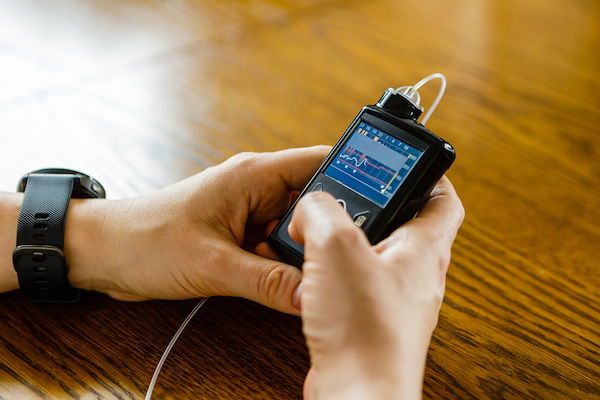Blog
How To: Keep Patients at the Center of Medtech Design and Development

David Edelman
Founder & CEO
Agile Enterprise

Once focused primarily on hardware, the medical device industry has evolved considerably to include medtech — devices integrated with software applications that allow for data collection and analysis. It’s a shift that requires putting patients at the center of everything medtech companies do.
Patient perspectives move to the forefront
Prior to this transformative shift, healthcare providers (HCPs) were the target customer for medical device sales, which meant companies focused their market research efforts on understanding HCP perspectives and preferences. But now that most innovations involve pairing products with personal devices like smartphones, it’s not enough to know what providers think. Design and development teams must consider the needs and wants of patients, as well as the challenges patients face every day in managing their health.
One way to accomplish this is through human-centered design, “a problem-solving technique that puts real people at the center of the development process, enabling you to create products and services that resonate and are tailored to your audience’s needs.” This is crucial because today’s patients expect to be involved in healthcare decisions and have a voice in future products and services.
Rapid research optimizes user-centered design and development practices
For companies in competitive industries with increasingly discerning customers, such as medtech, the ability to conduct rapid, iterative research offers tremendous benefits. Product designers and developers that choose to partner with a rapid-research platform will find that the combination of intuitive research tools and on-demand access to engaged patient panels is ideal for supporting user-centered design practices.
And because these platforms are both incredibly efficient (insights in hours) and cost-effective, they can play a major role in a company’s ability to keep a steady pulse on patient perspectives and preferences throughout the three phases of human-centered design popularized by global design firm IDEO: Inspiration, Ideation, and Implementation.
#1. Inspiration: putting yourself in the shoes of your patients
In this first phase, medtech companies take time to simply understand what patients want and need. They challenge their assumptions by gathering everything they can about the end-to-end experiences of patients, recognizing that experiences are often highly personal, too. What matters most to one patient may be a secondary consideration for someone else. Connecting with end users early in the process is instrumental to putting yourself in the shoes of patients and laying the groundwork required to move successfully through Ideation and Implementation.
#2. Ideation: involving patients in brainstorming
The insights gathered during Inspiration offer a strong foundation for testing your company’s ideas and evaluating their strength based on how well they meet the needs of patients. For example, you can observe how patients interact with your prototype to gauge whether it fills a gap in the marketplace (or misses the mark entirely). Often, this is the only way to determine if the huge investment of time, resources, and budget that you’re about to make is worth it or if you need to pivot when the unexpected is learned.
#3. Implementation: letting patients guide your path to market
The actual launch of the product represents another critical point in which patient perspectives are a must. Here, rapid research can be used to connect with patients for the purposes of evaluating various marketing and messaging strategies. The goal is to identify which ones are easy to understand, effective in conveying value, and ideal for prompting patients to take the desired action. These insights lead to a rollout that is effective in not merely successful in attracting customers but in turning them into fierce advocates who will further extend your product’s success.
Using rapid research to involve the end user across all phases of a human-centered design approach delivers the insights medtech companies need to create what patients want and need in the first place while responding immediately to any functional issues related to design architecture, product aesthetics or device integrations. Doing so ensures the product or service will be adopted and used properly while vastly reducing go-to-market risk.
About the author

David Edelman
Founder & CEO
David founded Thrivable to help patients and companies create a better world together. He is committed to bringing Thrivable's vision to life while cultivating a joyful, deliver extraordinary culture. David believes that when you bring people together to do good, everyone thrives.





